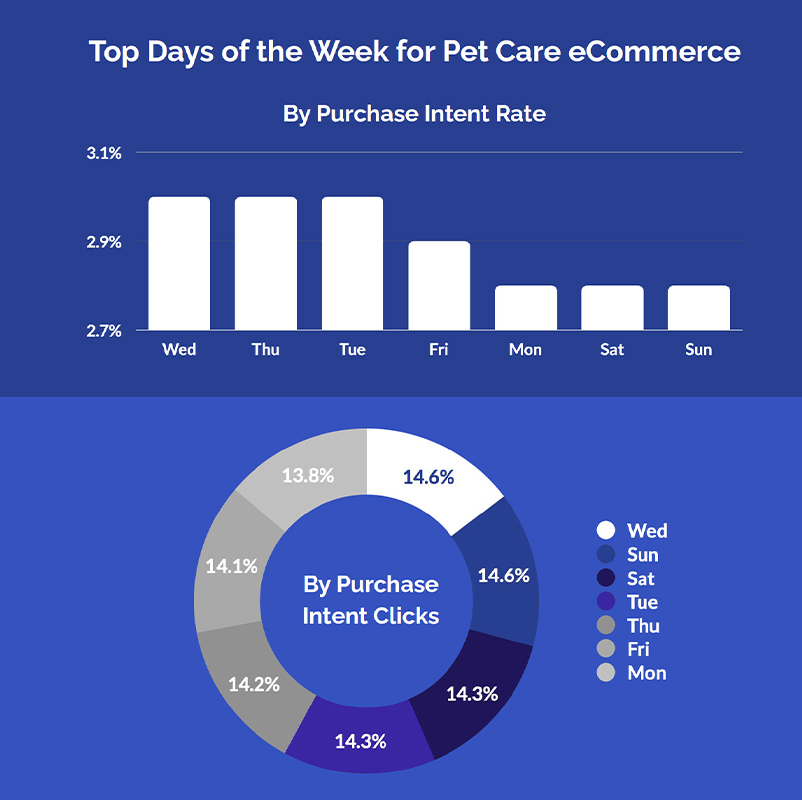NEW YORK — Consumers are moving online to conduct their pet product shopping, and this trend shows no signs of slowing. The rise of e-commerce continues, and the pet care space is no exception. According to Packaged Facts, brick-and-mortar pet product sales share decreased from 84% in 2017 to 65% in 2022, while e-commerce sales share increased from 16% to 35% over the same period. In another report by Bloomberg Intelligence, the firm estimated US e-commerce pet care sales will reach $57.7 billion by 2030, making up nearly a third (29.5%) of all sales in this market.
“The pet care e-commerce market is only expected to grow, posing a huge opportunity for online retailers and brands that can effectively market to the right audiences,” said Rachel Tipograph, founder and chief executive officer of MikMak, a global software company offering e-commerce analytics and optimization services for several industries, including pet care.
MikMak dove headfirst into this trend in its “2023 Pet Care Benchmarks and Insights Report,” offering granular data points on the most successful channels, products, and even times of day for purchasing pet care products online. But to understand MikMak’s report, we must first understand two key metrics used to gauge e-commerce success: purchase intent clicks and purchase intent rates.
MikMak leveraged purchase intent clicks as the main measurement for its report. Purchase intent quantifies a consumer’s likelihood to purchase a product within a given timeframe, typically over the following 12 months. According to MikMak, purchase intent clicks are defined as “the number of times a shopper has clicked through to at least one retailer during a single session,” and purchase intent rate is defined as “the percentage of shoppers who clicked through to at least one retailer.”
While this metric is widely recognized as a performance indicator for online marketplaces, the window to encourage purchase intent is incredibly small — determined in the first 1.5 seconds that a consumer visits a site, according to MikMak — making it crucial for e-commerce brands to prioritize their platforms for conversion.
Channeling purchase intent
Subscription-based pet care purchases are driving continued engagement for pet care retailers and brands, according to MikMak. For example, autoship sales for Chewy, Inc., accounted for 75% of the pet e-commerce company’s total net sales in the first quarter of 2023.
While specialty pet retailers still make up a majority of the top five sales channels on e-commerce, according to MikMak, Amazon maintains the most purchase intent clicks at 31.9%. Specialty pet retailers are trailing the e-commerce giant, including Chewy at 24.9% of purchase intent clicks, Petco at 16.6%, Walmart at 15.5%, and PetSmart at 11.1%.
“As the landscape gets more competitive with big box retailers amping up offerings to cater to these audiences, MikMak’s real-time insights help brands that sell through these retailers have full confidence in where they spend their next dollar,” Tipograph said.
On social media, MikMak shared Instagram and Facebook have the highest purchase intent rate for pet care products at 5% apiece, representing approximately 1.6-times above the benchmark of 3.2% for this market. TikTok is just below the benchmark at a 2.9% purchase intent rate, trailed by YouTube, Pinterest and Twitter.
 Source: MikMak
Source: MikMak
The right time
Purchase intent rate is constantly fluctuating, but MikMak recognized seasonal spikes and downturns along this trendline from June 2022 to June 2023. According to the company, online purchase intent rates for pet care products peaked in March and April, more specifically the first week of March.
Additionally, MikMak identified Wednesdays, Thursdays and Tuesdays as the most likely weekdays for consumers to purchase pet care products online, with a purchase intent rate of 3%. Wednesdays and Sundays represent the highest traffic, both at 14.6% of purchase intent clicks. Even more specifically, data points to 11 a.m. Eastern as the most likely purchase time for online pet care shoppers, with a purchase intent rate of 3.1%.
Ready for checkout
MikMak noted the average e-commerce consumer’s pet care basket size is 5.4 items.
According to the company, cat products and dog medications are currently dominating e-commerce sales. The company clocked cat litter as the No. 1 product by sales, followed by 13.5-lb and 3.15-lb bags of chicken-flavored cat food. No. 4 on the list was enalapril maleate tablets for dogs — a medication used to treat high blood pressure — and No. 5 was carprofen tablets for dogs — an anti-inflammatory medication.
The “2023 Pet Care Benchmarks and Insights Report” summarizes data from June 2022 to June 2023 compiled from the MikMak Shopping Index, which serves as a repository for e-commerce KPIs from hundreds of brands across more than 250 channels. The Index also includes data from more than 3,000 retailers to provide insights on shopping behaviors, as well as first-party e-commerce data from MikMak Shopper Intelligence.
Find more articles about e-commerce in the pet product industry.



